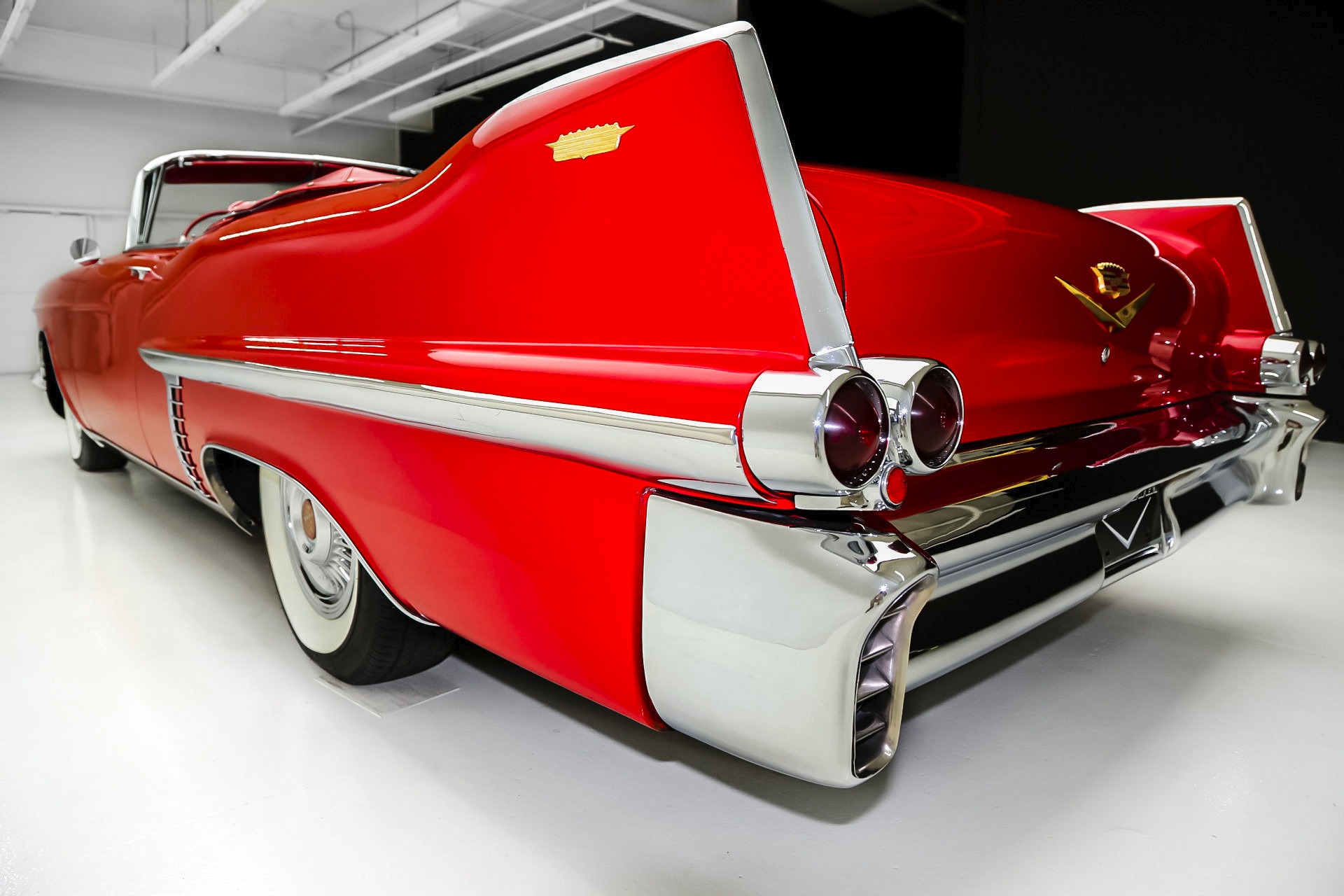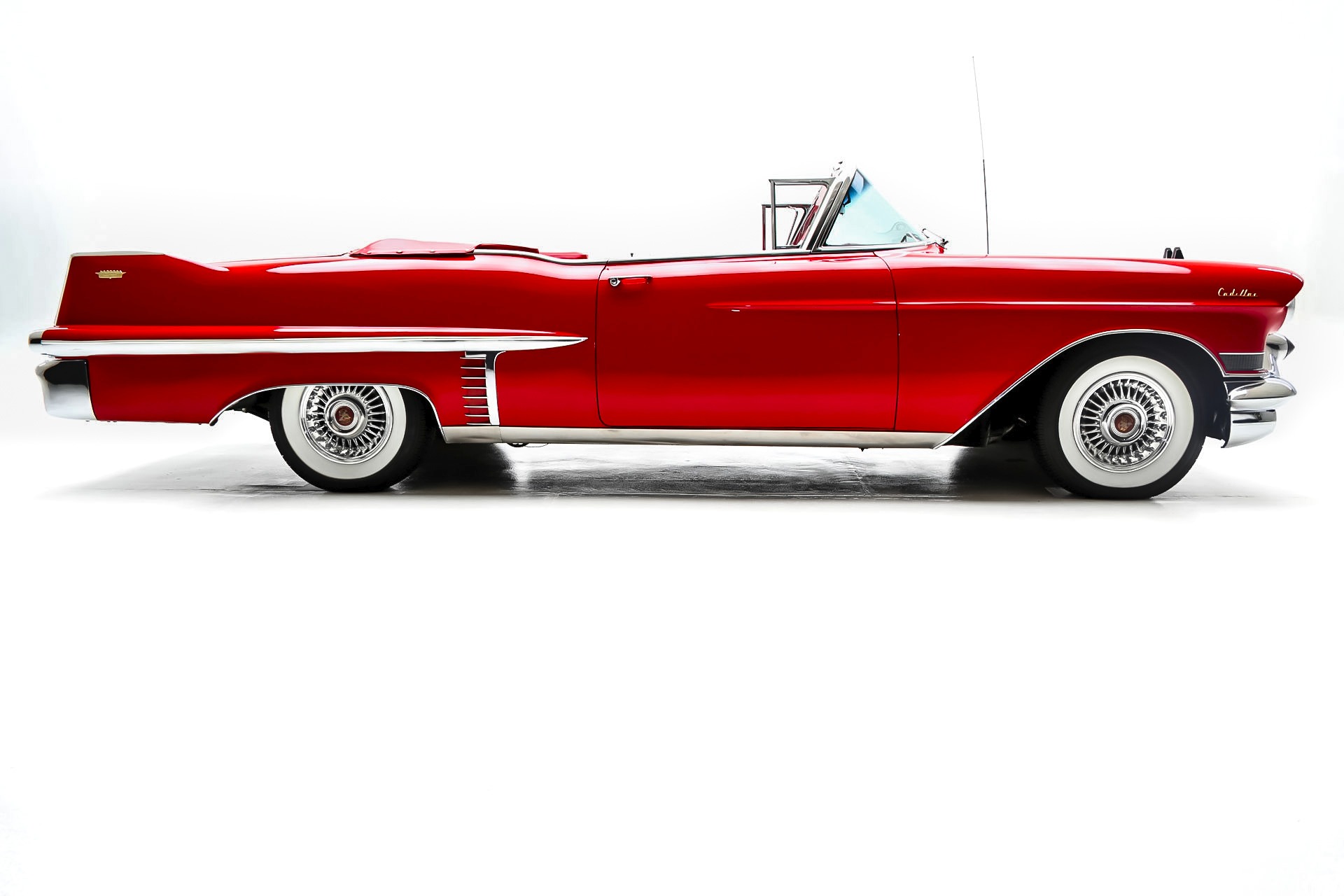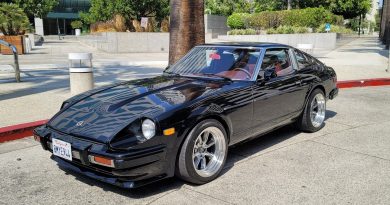1957 Cadillac Series 62
The Cadillac Series 40-62 is a series of cars which was produced by Cadillac from 1940 through 1964. Originally designed to complement the entry level Series 61, it became the Cadillac Series 6200 in 1959, and remained that until it was renamed to Cadillac Calais for the 1965 model year. The Series 62 was also marketed as the Sixty-Two and the Series Sixty-Two. The Series 62 was used to introduce the Cadillac Coupe de Ville and the Cadillac Eldorado which started out as special appearance packages that were later placed into production.
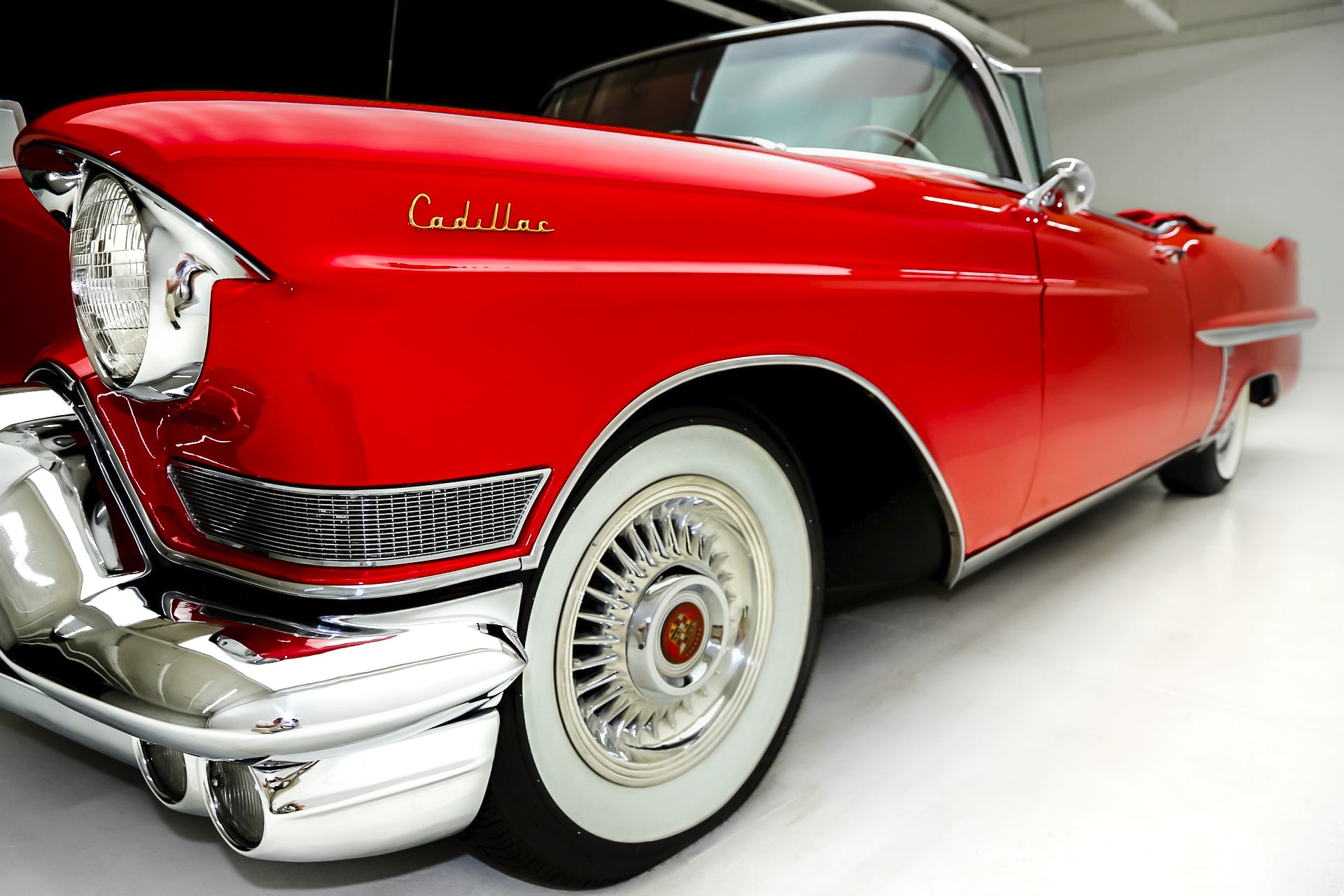
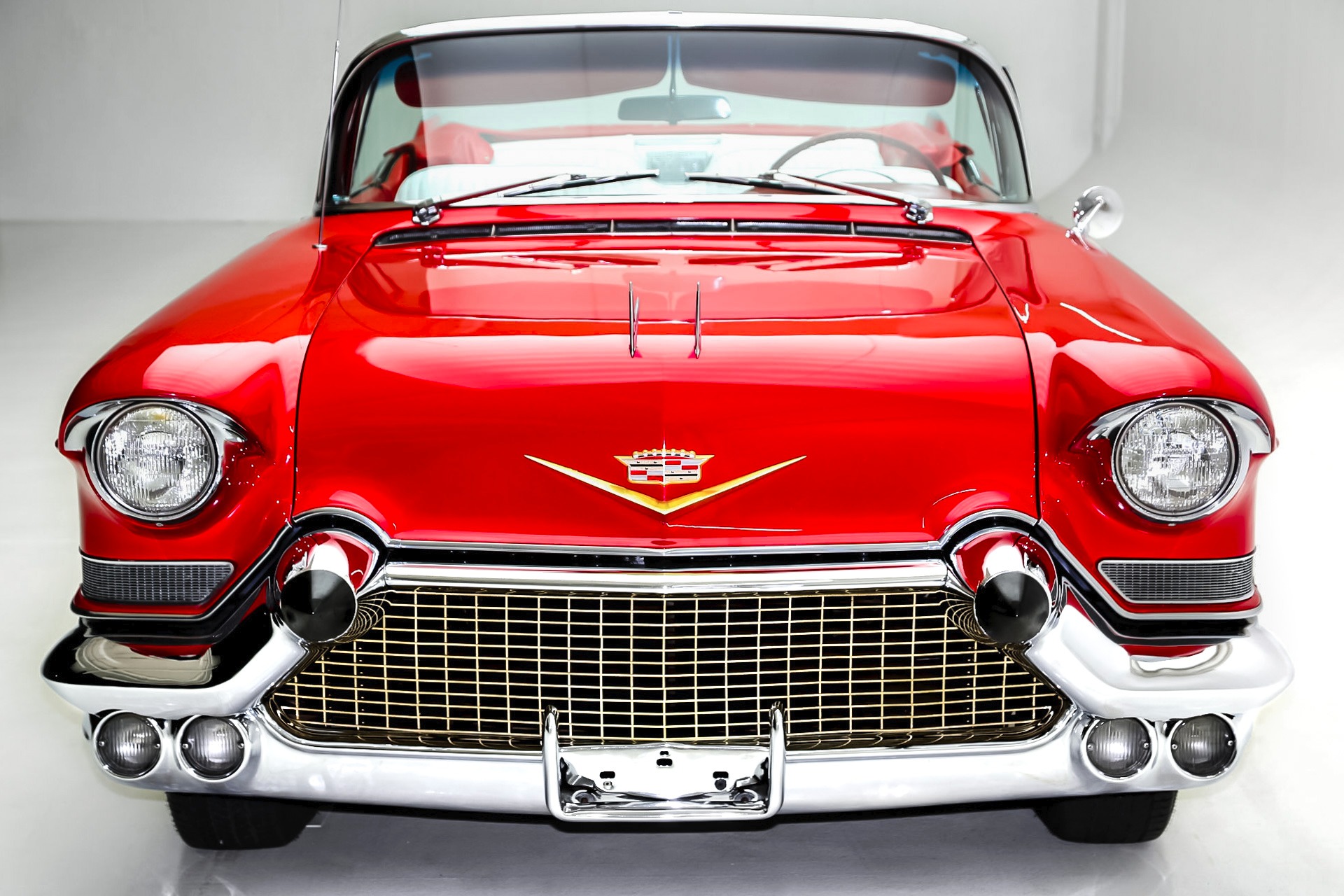
For 1957, a tubular X-frame without side rails was adopted. This resulted in lower body without a loss of usable space. Front end styling was marked by rubber bumper guard tips and dual circular lamps set into the lower bumper section. Side trim was revised and a dual taillight theme was used. Identifying the standard 62 models were bright metal moldings, just forward of the rear wheel openings, highlighted by seven horizontal wind slits. At the upper end this fender brake trim joined a horizontal molding that ran along a conical flare extending towards both taillamps. A crest medallion was seen on the forward angled rear fins. De Villes had special nameplates on the front fenders.
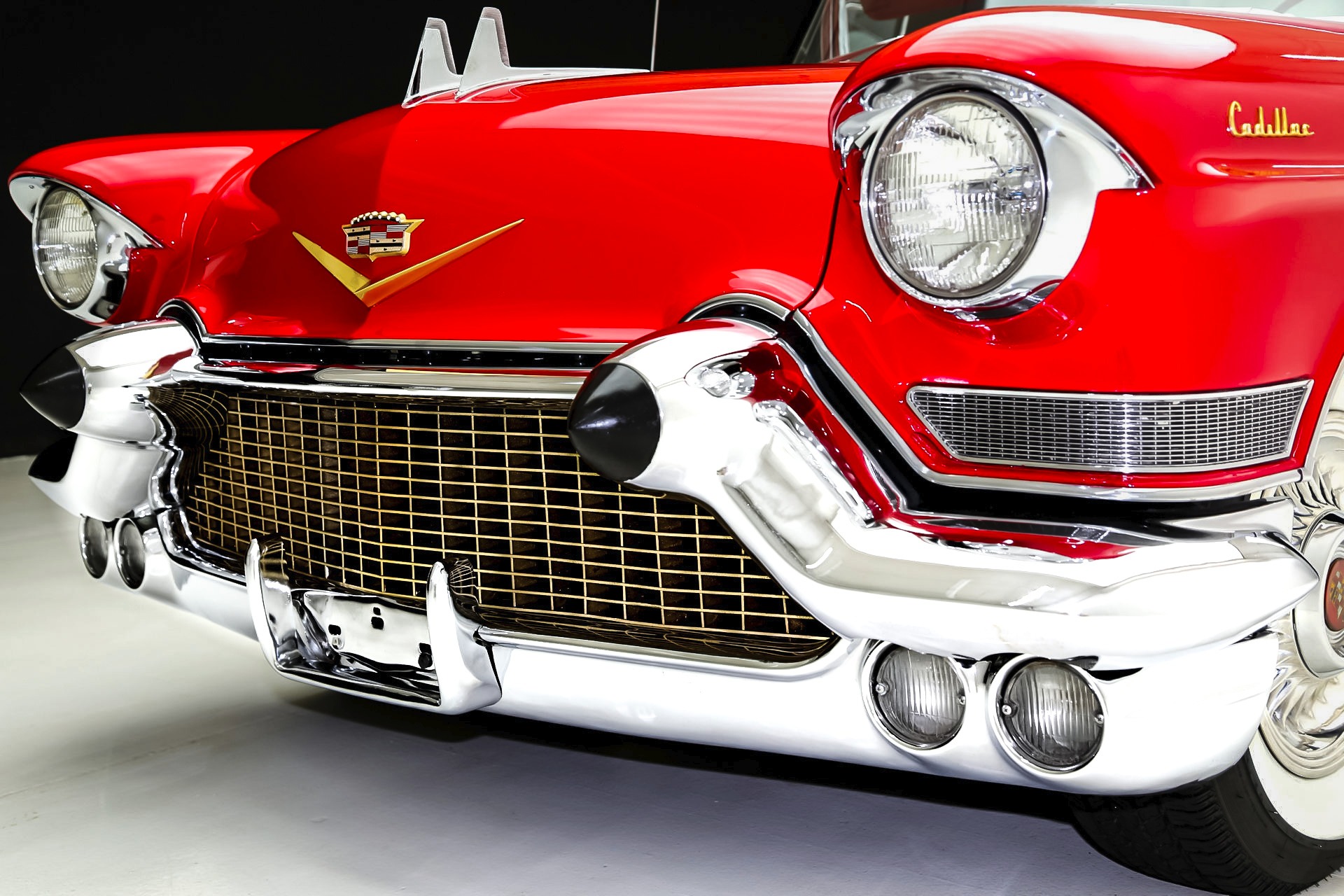
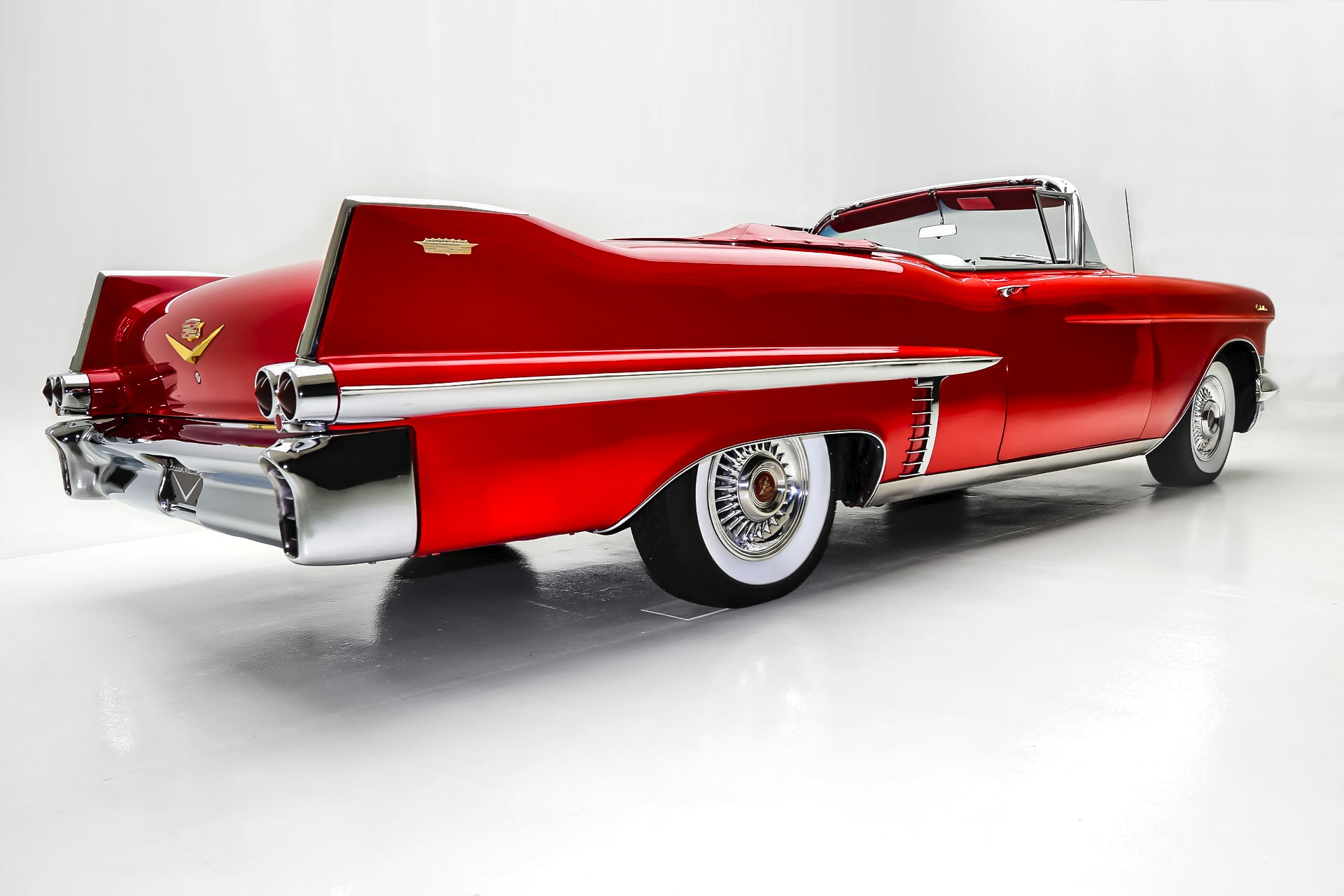
The Series 62 Cadillac is powered by a 365-cid, 300-hp V-8 engine equipped with a four-barrel carburetor and matched to a Hydra-Matic automatic transmission.

The interior is presented in a similar shade of Red with a second color of White. This elegance remains with this well-received car that was high on many buyers list when new. It is equipped with power steering and brakes; AM radio with rear speaker, covered spare, jack, factory wheel covers and wide whitewalls.

The famous Cadillac Series 62 Convertible, upon introduction, was widely regarded as one of the most renowned automobiles to travel the world’s highways and is rightly considered as a motorcar of special distinction. Cadillac’s styling artistry shines through, as does the highly respected Cadillac engineering. It displayed a new, close-to-the-road styling that was immediately apparent in the forward rake of the hood and the massive, distinctively styled grille. The trunklid and rear fenders were of equal height, with the accents of subtle fins, and it produced an effect of greater width.
